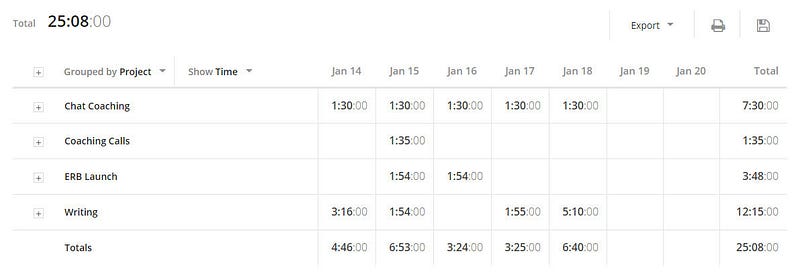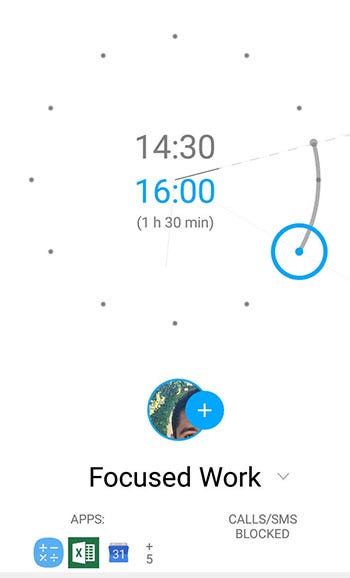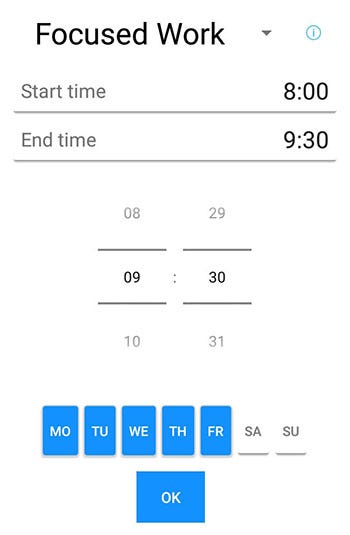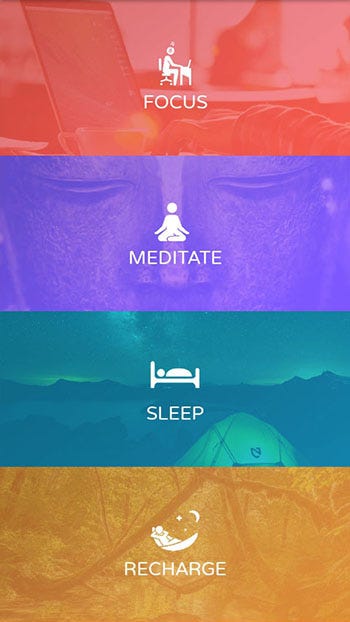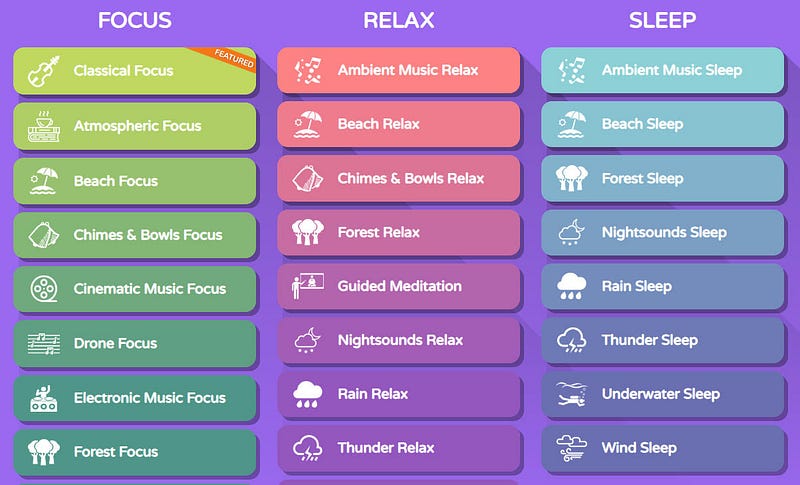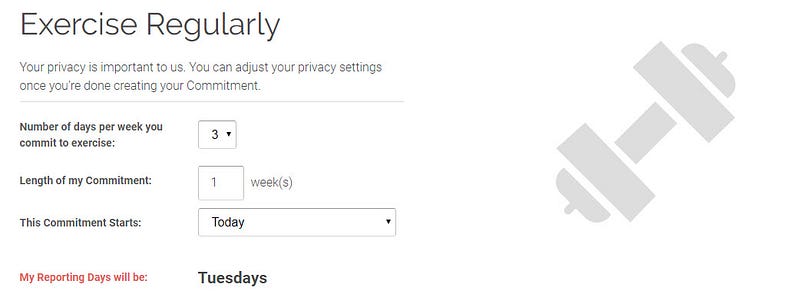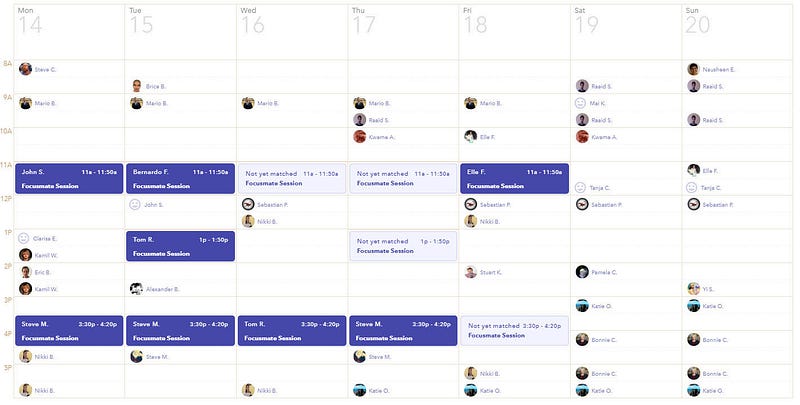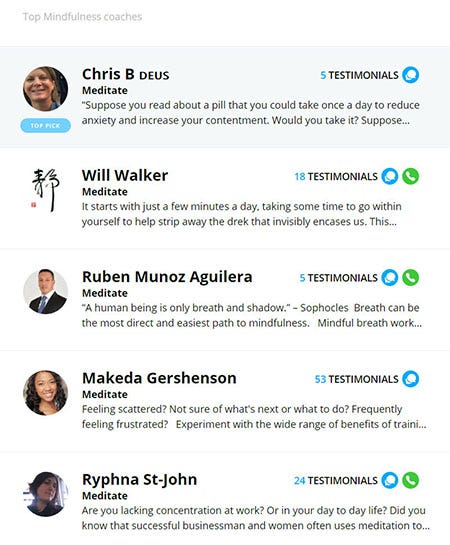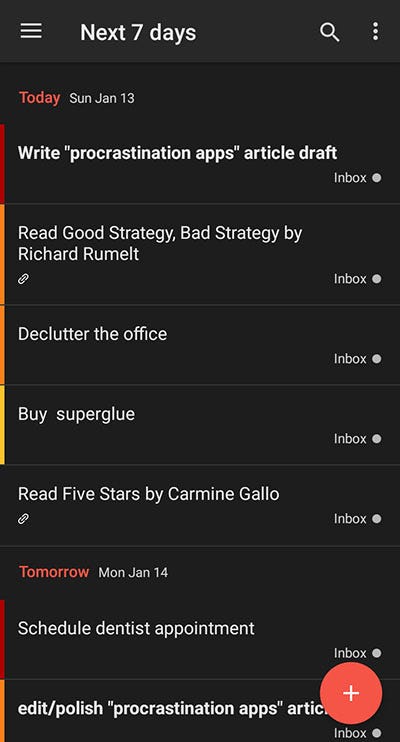Remember that grogginess you feel when the alarm clock goes off?
Is there a worse feeling than NEEDING more sleep but knowing you HAVE TO get out of bed? Knowing that you have to struggle through the grogginess and mental fog in the morning.
It’s painful, isn’t it?
You can even feel it when you’re setting the alarm on the night before— “Tomorrow morning is going to suck!”
Of course, most of the time you fail to get up at the alarm time and snooze at least a few times.
And then the guilt comes…
We feel like we wasted the whole morning yet again. We feel powerless to change. We feel like we’re a hopeless case because we fail at a simple thing as getting out of bed early.
And it’s not for lack of trying.
You’ve probably read a ton of tips and tricks about how to do it. And most of those boil down to: “Use more discipline!”
Push harder!
But it’s easy to say for people with strong discipline. They just make it happen. And those people don’t really need to be told how to do it anyway.
They just get up early.
However, what if you don’t have strong discipline? What if you’re naturally lazy?
Do you need to work hard for years to develop your discipline just to be able to do a simple thing as getting out of bed when the alarm goes off?

No!
At least not if you’re using a smarter approach.
I managed to overcome the snoozing habit exactly when I stopped following the traditional advice. When I stopped trying to push harder.
And I’ll share with you that smarter technique in a minute, but first let me tell you something that might surprise you…
You are NOT the One Who Decides to Snooze The Alarm
See, getting out of bed in itself isn’t difficult.
I mean, it’s just getting out of bed, right? How hard is that?
If you’re sitting or lying right now reading this article, how hard is it going to be to just get up?
You don’t have to use discipline to do it.
But that’s because now your mind is fully in control. You’re feeling fine, you’re wide awake and you can easily control what you do. So you’re consciously making the shots.
But what happens in the morning?
Usually, you’re in a completely different state—you’re sleepy, groggy, and brain-fogged. You feel like you need to get more sleep to feel better.
So your mind loses the control that it had when you were wide awake and feeling good.
You’re now under the influence of your body, emotions, heart, or whatever you wanna call it. Anything but your conscious, rational mind.
You can say that your body is calling the shots.
And that’s what discipline is—forcing yourself to do something your mind wants to do, but your body doesn’t feel like.
So something as simple as getting your body to stand up becomes much more difficult because your mind and body are in conflict.

We have that problem not just with waking up but with pretty much all productive habits that we want to build.
E.g. your mind is telling you, “Go exercise.” And your body is saying, “Nah, I don’t feel like it, let’s watch Netflix.”
Or…
Your mind is telling you, “I’ll cook a whole, healthy, organic meal tonight.” And your body is like, “A pizza sounds so much better.”
The problem is that we do most of our goal-setting when we’re in that good feeling place and our body is satisfied.
But when we’re actually supposed to do the actions, things like getting out of bed early, exercise, or eat something healthy—we’re in a completely different state.
At the time of action, our body is calling the shots.
So the obvious solution is, if we want to make it happen we have to use discipline. Force our bodies to do what it doesn’t feel like it.
But there’s a problem with that.
Most of us are not naturally disciplined. And sure, you can slowly build up your discipline with time and become better at it.
But that approach takes a long time, and it just isn’t fun.
How enjoyable is your life going to be if you had to struggle, and push yourself every single morning just so you can stop hitting snooze and get out of bed early?
Luckily, you don’t have to do that because there’s a better solution.
But before we get into that let’s see why usually discipline doesn’t work in this case.
Why More Discipline Will Never Help You to Stop Snoozing
So discipline is doing something that our mind wants to do but our body doesn’t feel like.
And to understand that better, let’s see how our body (or subconscious) makes decisions.
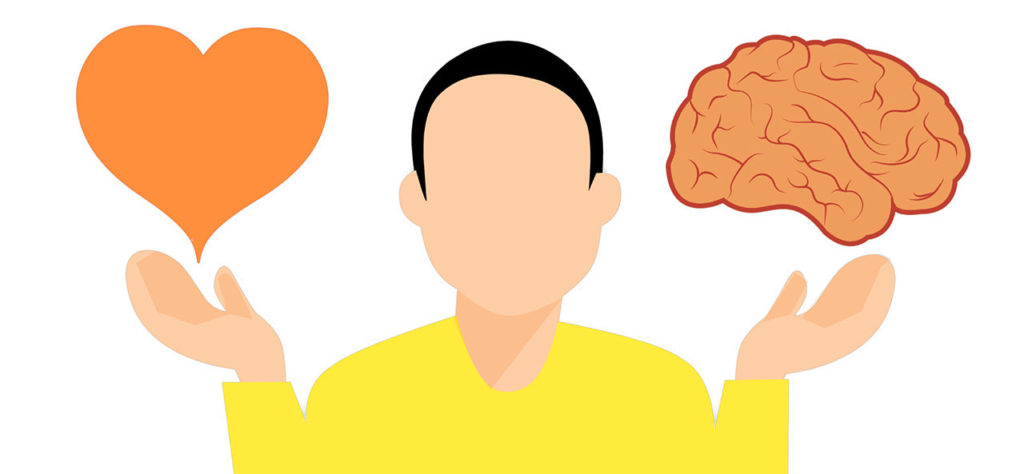
It doesn’t use logic and rationalization. It mostly does what it did the day before. And the day before that.
It does it out of habit.
There is an automated, habitual response to a stimulus (a physical sensation or an emotion.)
E.g. we feel hot searing pain and the automatic response is to immediately get our hand away from the fire.
We feel fear and the automatic response is to run away.
We feel hunger and the automatic response is to look for something pleasurable to eat.
So if you feel tired and groggy in the morning the automatic response is to snooze and get more sleep.
And since our alarm usually goes off while we’re in that state, our subconscious associates that sound with grogginess.
Its automatic response to the sound is to snooze and get some more sleep. That response is just a habit.
And habits, of course, can be changed.
But habits are all about momentum.
The longer that automatic response has been going on, the more momentum it has. And you’ve probably been snoozing for years, if not decades.
There is so much momentum towards the automatic snoozing response that reversing it with more discipline is difficult.
It would be like trying to push a car uphill—a ton of struggle, and not very fun.
I tried to do it with more discipline for years and it always failed long-term.
So how do we start reversing that momentum in a fun way, that doesn’t require pushing hard? That’s exactly what the technique I’m talking about will help you do.
It helped me to completely reverse that momentum and build it in the direction that I want—jumping out of bed immediately when the alarm goes off, regardless of how my body feels.
And here’s why it works so well…
From Chronic Snoozer to Early Riser—What’s the key?
What we’re trying to do with this technique (we’ll finally get to how you do it in the next section) is reverse the momentum.
We’re trying to:
- Stop the automatic response of snoozing when the alarm goes off.
- Recondition the response of jumping out of bed immediately.
That automatic response can also be called an unconscious decision—an action that our body (or subconscious mind) decides to take without involving any rational thought at the moment.
And a decision can be seen as a choice between two or more options. It’s like a fork in the road—you either go left (snooze) or right (get up).

Now you might make the conscious decision in the evening to take the right path—to get up immediately when the alarm goes off.
But in the morning, when you’re supposed to take action, you’re NOT making a conscious decision. Your body is calling the shots.
And which path is it going to take? That’s right—the right one.
Why?
Well, because the right path is what it’s been taking every day over and over again.
That path is easy to walk.
It’s paved well and there are no weeds in your way. So it’s not going to take less effort to choose the right path.
And that’s a very important point—your body is always going to choose the path that feels easier at the moment. It doesn’t care if it leads you to a bad place eventually.
And what about the left path?
You haven’t walked that path for a long time. It’s not paved and there are tons of weeds and fallen logs along the way. In other words, it’s going to be much harder to walk that way NOW.
Yes, it might lead you to a great place in the future, but your body doesn’t care about the future.
It only cares about easy and fun NOW.
So there’s our problem—our conscious mind wants us to take the right path and get out of bed, but when you’re tired and groggy you don’t have control of your actions.
Your subconscious mind does.
And it does that in insidious ways. It will give you thoughts like:
- “Just 10 more minutes in bed wouldn’t make a big difference.”
- “Being late to work just one day doesn’t really matter.”
- “We can skip your morning exercise, just for today.”
And you KNOW that these are just excuses. They’re short-sighted and they’re leading to a bad place in the future.
But again—your subconscious doesn’t care about the future as much. It cares about fun here and now.
So what happens on most days? — You end up snoozing despite your good intention the night before.
What can we do to change that?
If we want to stop snoozing, we have to stop trying to use our conscious mind to take control with discipline.
That doesn’t work long-term.
Instead, we have to figure out a way to get our body (who’s calling the shots in the morning) to make the right choice automatically.
We have to find a way to make the right path more attractive.
And that’s what the technique I mentioned before is all about—it’s about pre-paving the right path and plucking out the weeds beforehand.
It’s about reversing the momentum.
Let’s take a look at how it works…
The 7-Step Technique That Changed My Mornings Forever
So how do we change that automatic, subconscious response and move it in the other direction?
The answer is simple—you do it by practicing the opposite response. You start by walking the right path over and over again and pre-paving it.
But there is a trick.
Doing that every morning when you’re groggy doesn’t work.
Instead, we do it when we’re wide awake and feeling good. When getting out of bed isn’t a challenge and your mind is still in control.
So here’s what you do…
This is going to sound ridiculous and you’ll feel like a lab rat when you’re doing it, but bear with me…
It’s very powerful and it works—it was the only thing that got me to stop snoozing and jump out of bed immediately every morning.
The 7 practice steps:
- Pick a 15-minute period of the day when you know you’ll be at home, wide awake, and feeling good.
- Re-create the morning conditions as closely as you can. (Prepare your bed for sleep, put on your pajamas if you wear any, turn off everything around the house, lower the blinds/curtains, etc.)
- Set your usual alarm clock for 2 minutes from now. (Away from the bed so that you have to get up to turn it off.)
- Go to bed and relax your mind and body as if you were going to sleep. (You don’t have to actually fall asleep.)
- After the alarm goes off, immediately jump out of bed and turn it off. The alarm has to be in the same place and using the same sound as you usually use.
- Start doing the very first thing that you usually do in the morning, like brushing your teeth. (You don’t actually have to brush, just go to the bathroom and pick up the toothbrush.)
- Wait one minute and then start again from step #1.
Sounds weird huh?
That’s how I felt when I first heard it. But everything changed once I actually tried it.
So why is this technique so effective?
It’s effective because you practice the way you want your body to respond to the stimulus—the alarm clock.
You start to reverse the momentum in the direction that you want.
In other words, you’re walking the right path. Consciously pre-paving it, and taking the weeds out. So when it’s your body is at that fork in the road again, the right path looks more attractive and it’s the one it automatically takes.
See, the technique might sound weird when we’re talking about waking up early and snoozing, but it’s nothing more than intentional practice.
And we’re doing it every single day for other habits and skills that we want to improve:
- What do you do if you want to get better at dancing? —You practice.
- What do you do if you want to do well on a test or an interview? —You practice.
- What do you do if you want a muscle to get stronger? —Take steroids. Nah, just kidding. You get the point…
E.g. Basketball players practice for hours making free throws so they teach their body the right movement. Does it matter if they make the free throw in the practice session? No, not really. At least not short-term.
But if they do it over and over again, they get better at it. And when the big game comes and they have to make that key free throw they’re conditioned to make the basket and win the game.
In the same way, when you practice getting out of bed during the practice session, it doesn’t really.
It might even feel like a waste of time.
But if you continue to practice this technique. If you continue to pre-pave that right path—in the morning, when it actually matters—your body is going to be conditioned to make the right choice.
It’s going to automatically jump out of bed.
The technique sounds simple enough, but there are a few tricks to make it really effective.
Let’s look at those next…
6 Tips to Make the Technique Even More Effective
1. How long should a practice session be?
Building that momentum towards snoozing didn’t take you one day. So it’s not going to take one day to reverse it.
And yes, we have to pre-pave the right path but it doesn’t happen in one big chunk of time.
It’s all about consistent action over time.
And practicing for hours at a time isn’t fun anyway. Since it’s repetitive you’ll be bored quickly.
So the key is to spend just 15 minutes on it every day. That’s easy and it doesn’t take discipline to do.
In those 15 minutes, you’ll have time to do 3-4 repetitions, which for one day is enough.
If you do that over and over every day, within a week you’ll notice that jumping out of bed in the morning is much easier.
If you do it for 2 weeks, it will get even easier.
And once you get the momentum going, you don’t have to keep up the practice. It’s self-reinforcing since you’ll be taking the right path every morning.
2. When should I do the practice?
It’s easier if you schedule the 5-minute period at the same time every day and set a reminder, so you don’t have to remember to do it.
The best way I’ve found is to anchor it to another activity you’re already doing.
Obviously, you have to be at home.
So it might be right after you get back from work. After you put your kids to sleep. After dinner. Etc.
Just make sure it’s far enough apart from your wake-up/bedtime so you’re wide awake and not tempted to fall asleep when you practice.
If it’s difficult to get up when the practice alarm goes off you’re defeating the purpose of the exercise.
The practice is supposed to be easy so you don’t have to use discipline to do it.
3. What if I start snoozing again?
What if you go on a vacation or a long holiday and start snoozing again?
That’s why this technique is so great—you can use it again in the future. It doesn’t have diminishing returns.
And since you’ve already done the practice before, some of the right path will already be pre-paved.
It will be easier and faster the second time around.
So if you find yourself snoozing again at any point, schedule one week of practice sessions and you’ll be back on track before you know it.
4. Do I have to physically do the practice with an alarm or visualize myself doing it?
Visualization is powerful.
It’s almost as good as the real practice in terms of results. That’s why many sports professionals use it too.
E.g. Using the basketball example again, you’ll get a similar benefit from visualizing yourself making the successful free throw as you would from actually doing it.
But doing it physically is stronger.
I recommend, at least for the first one week to physically go through the practice sequence and build your muscle memory as well.
5. Do I have to re-create the morning conditions perfectly?
In one word: No.
The main thing that we’re trying to link is the sound of the alarm with your body jumping out of bed.
But the more of those morning conditions you associate the better.
So to get the best results, make sure your bed is the way it usually is in the morning. You’re wearing what you’re usually wearing when you wake up. The light conditions match the morning ones. Etc.
6. Should I put the alarm away from the bed?
The whole point of the automatic response is to do it immediately.
And putting the alarm clock away from the bed forces you to get up right away (or listen to the annoying sound).
Yes, there’s nothing stopping you from going back to bed once you turn it off. But usually, it’s easier to stay up than trying to get up in the first place.
Also, if you practice the whole sequence, you’ll also be conditioning your next action after turning off the alarm—to immediately go and do the first thing in the morning like brushing your teeth.
So staying up will become easier too.
Getting Out of Bed Every Morning Doesn’t Have to Be Painful or Hard
You don’t need to experience the guilt of losing your precious morning hours every day and then beat yourself up about it.
If you follow the right plan it can be easy and fun.
But you have to do some work beforehand. Not the disciplined, push-harder work that hasn’t worked so far.
If it hasn’t, why do you keep doing it?
It’s time to try something new. Something that I guarantee will work if you give it a shot.
And what does it take?
It takes just 15 minutes of practice every day.
Are you willing to invest 15 minutes of practice for 2 weeks to reap the benefits?
To start every single morning on your own terms. To feel in control of your body in mind when you wake up? To replace the feeling of guilt and hopelessness with one of satisfaction?
If so, open up your calendar now and schedule 15 minutes every day for the next 2 weeks. Show up every day, do your deliberate practice, and watch the transformation happen.


